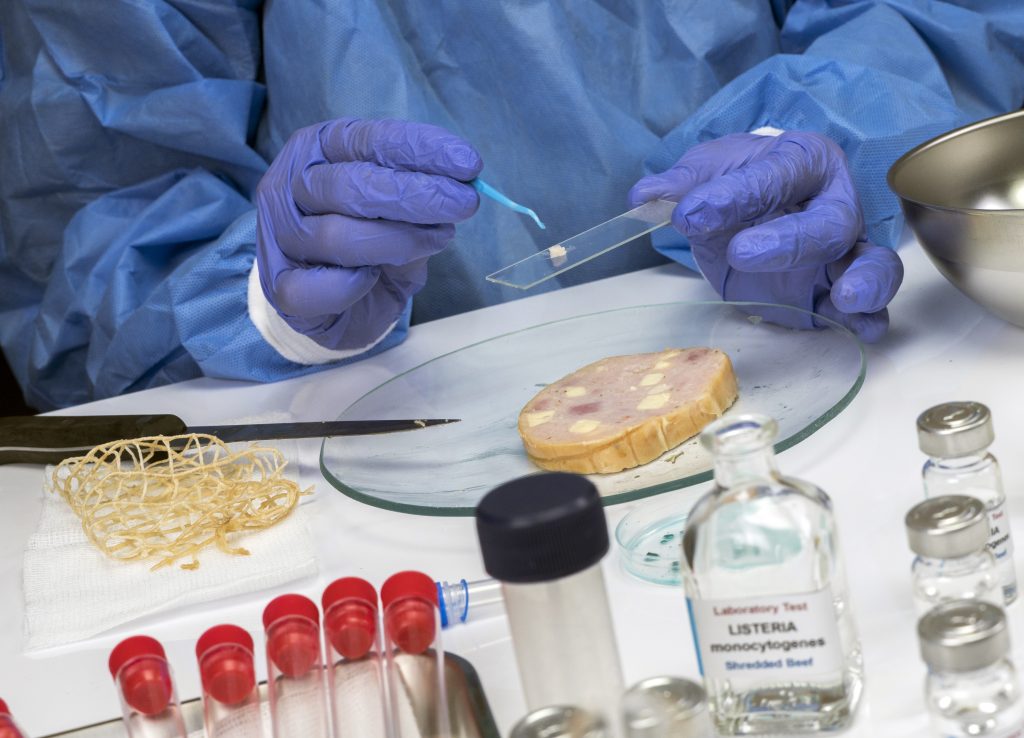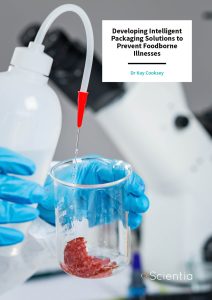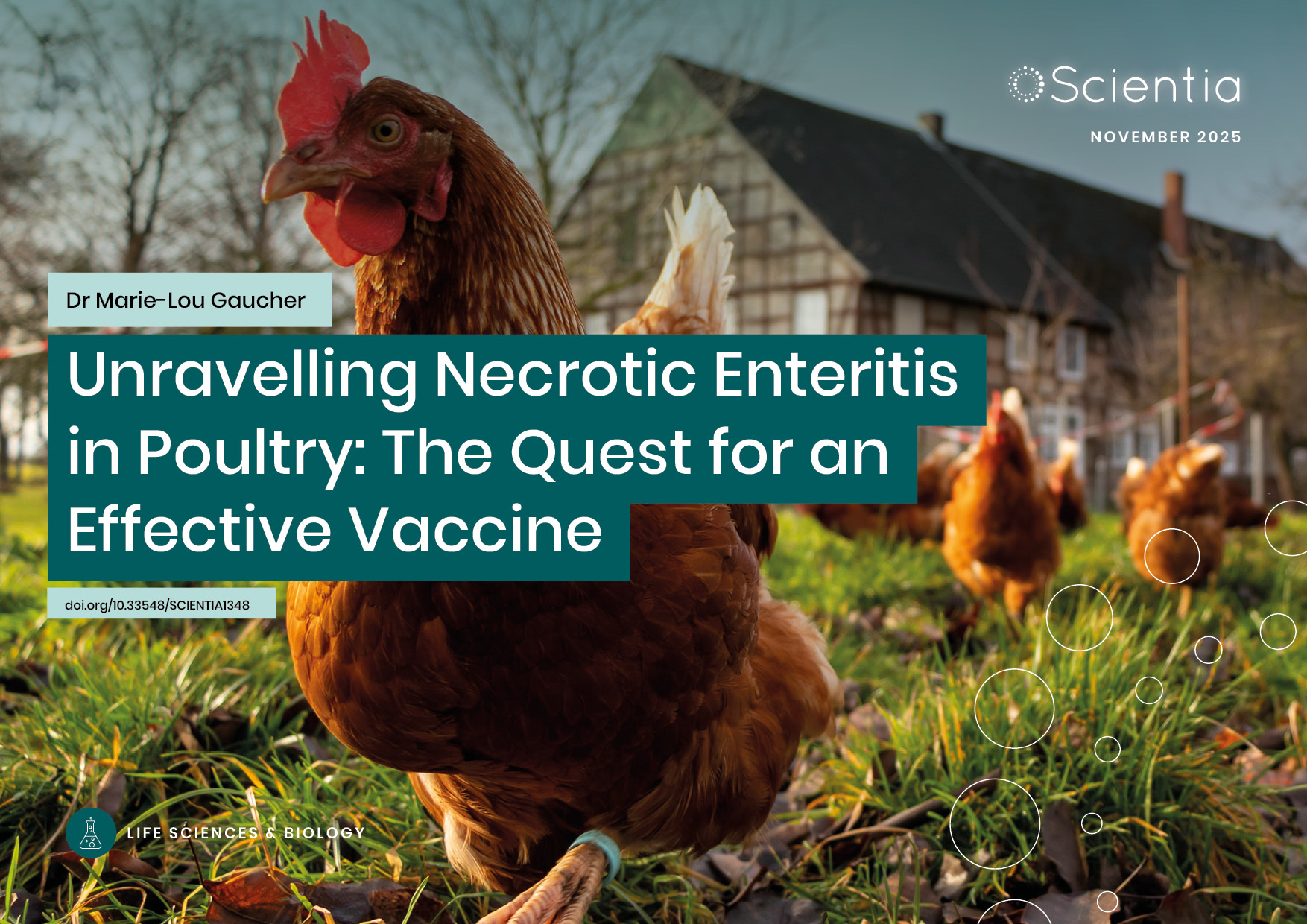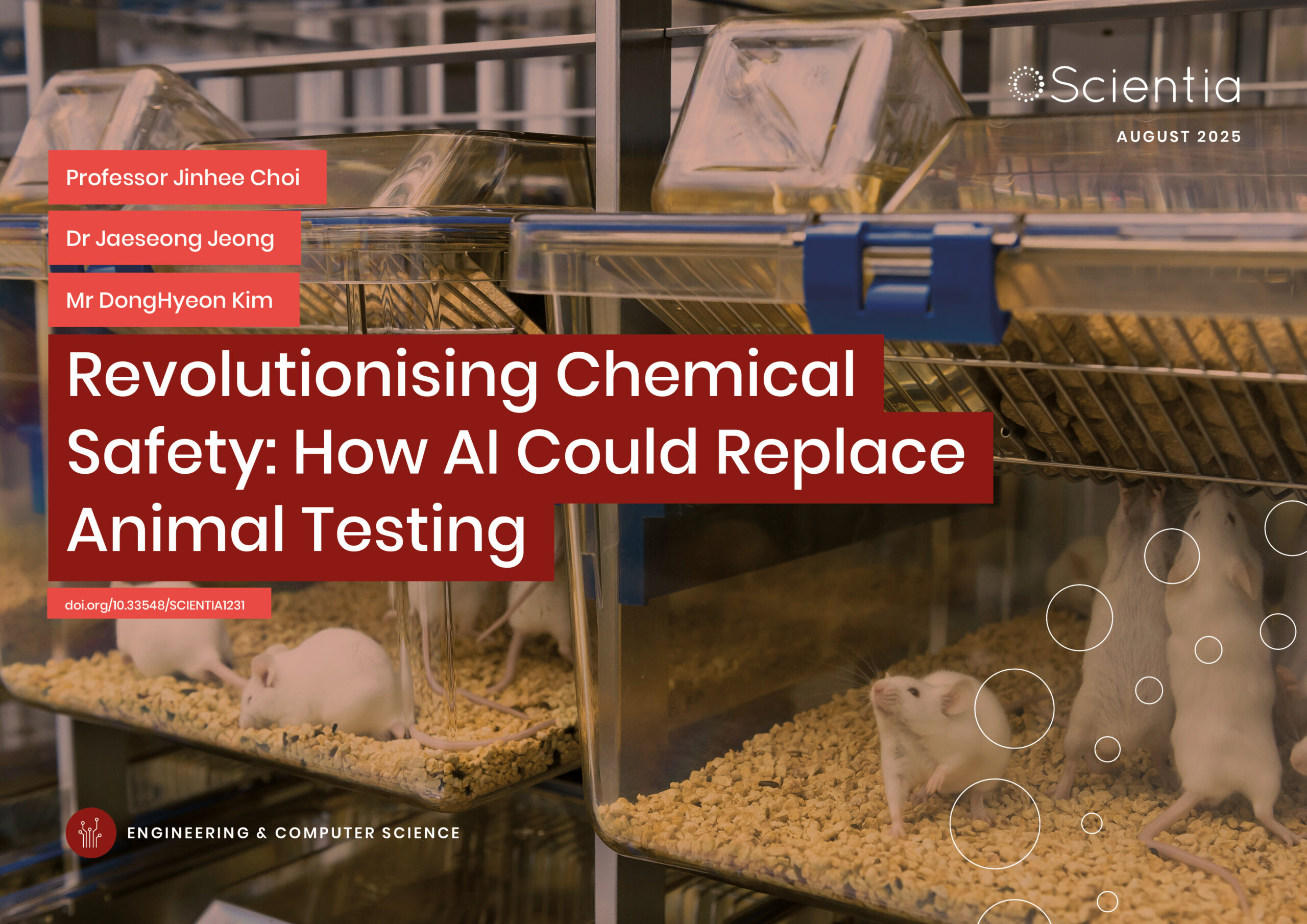Dr Kay Cooksey | Developing Intelligent Packaging Solutions to Prevent Foodborne Illnesses
Many of us avoid foods that contain ingredients we haven’t heard of. However, many of these chemicals are beneficial because they prevent the growth of bacteria that cause foodborne illnesses. Although food quality standards have improved dramatically, outbreaks of foodborne illnesses are still common. Luckily, we have one line of defence to exploit: antibacterial food packaging. Dr Kay Cooksey of Clemson University is leading ground-breaking research to overcome the hurdles associated with antibacterial food packaging, bringing it one step closer to market.
Foodborne Illness
Global food systems have grown in complexity and scale to respond to increased urbanisation and population growth. These significant advances have increased food production and transportation. However, they have also exposed vulnerabilities that can radiate through a highly complex food system to cause severe food disease outbreaks.
To reduce outbreaks, governments and researchers have implemented strict and effective food safety measures and practices. Although our standards have significantly improved, bacteria including Listeria monocytogenes and E. coli still cause thousands of illnesses and hundreds of deaths in the US alone each year.
Antimicrobial Packaging
Antimicrobial packaging could serve as an additional measure to enhance food safety. Also called ‘active’ or ‘intelligent’ packaging, such materials have received considerable attention as the demand for high-quality food products with an extended shelf-life increases.
Intelligent packaging can be created by blending antimicrobial chemicals into the packaging material, or by coating a layer of such chemicals onto package surfaces. Additionally, some solutions involve sealing food in a package containing a protective gas. In response to growing consumer demand for sustainable packaging, many researchers are developing antimicrobial coatings derived from natural sources that can be applied to bio-based packages.
Intelligent packaging may seem like a no-brainer, but adoption of these technologies on a commercial scale faces several challenges. First, many of these chemicals remain mired in regulatory backlogs for years. Additionally, every substance must be extensively studied to determine whether it affects the flavour of the food. In some cases, these chemicals are only effective for short periods of time.
Most antimicrobial coatings for food packaging have only been tested in the lab. Now, we have an urgent need to test these coatings on a larger scale to assess their safety and effectiveness.
Dr Kay Cooksey of Clemson University has been at the forefront of intelligent packaging research for many years. ‘My research can be described as mainly focusing on food packaging that impacts food safety and quality,’ she explains. ‘The food industry does a fantastic job in maintaining safety before the food goes in the package, but the idea of having a package that provides additional protection through the active release of an antimicrobial agent could provide another hurdle for spoilage and pathogenic bacteria to overcome.’

Nisin and Turkey Bologna
Nisin is an antibiotic produced by fermenting strains of the lactic acid bacterium, Lactococcus lactis. Nisin works by binding to the cell membranes of other bacteria and disrupting cellular chemistry. It is of the first antibiotics recognised for its potential in food preservation, and has been studied since the early 1950s.
Nisin shows excellent promise to combat Listeria monocytogenes, the bacteria responsible for Listeriosis, the third leading cause of death from foodborne illness in the US. Listeria monocytogenes is pervasive – found in soil, drains, water, and even on people. This harmful strain of bacteria is linked to deli meats such as salami, mortadella, and prosciutto. Though nisin is often used in processed cheese, it is still not used in deli meats.
Dr Cooksey has studied nisin in her lab for decades. In 2005, she determined the minimum level of nisin needed to inhibit the growth of Listeria monocytogenes. In the same study, her lab reported an effective packaging coating solution for nisin.
More recently, in a 2022 study, Dr Cooksey and her colleagues developed a food-safe coating formulation that can slowly release nisin, increasing the amount of time the antibiotic remains effective.
As part of this study, the research team inoculated turkey bologna deli meat with Listeria monocytogenes. They then took a sample of the meat and sealed it in a pouch with their coating solution. They found that nisin, when coated in an bio-based material called pectin, is food safe and colourless.
Notably, the nisin coating significantly reduced the concentration of Listeria monocytogenes in the turkey bologna when compared with a control. These results suggest that the nisin and pectin combination could provide valuable defence against this harmful strain of bacteria in deli meat. However, Dr Cooksey stresses that ‘more testing on a wider variety of meats is needed to provide further evidence of the film’s effectiveness.’

Chitin and Chitosan
Chitin, a substance that forms a major part of crustacean shells and insect exoskeletons, contains many reactive components that can readily destroy microbial cell walls. Like nisin, chitin and its derivative chitosan both show promise in combating Listeria monocytogenes. Chitosan can be synthesised by removing ‘acetyl’ chemical groups from chitin, in a process known as ‘deacetylation’. However, it is impossible to completely deacetylate chitin to form pure chitosan.
In the early 2000s, Dr Cooksey and her lab evaluated the microbial effects of chitosan solutions with different percentages of deacetylation. Dr Cooksey found that all of the solutions – from 90% to 80% deacetylation – effectively reduced Listeria monocytogenes in a solution.
Chitosan is biodegradable, making it an attractive option for sustainable food packaging materials. However, it is sensitive to changes in pH and cannot easily diffuse through solid materials. Luckily, Dr Cooksey has continued research into chitosan and has mentored several graduate students studying its properties to develop solutions that will enable us to use chitosan commercially. In 2013, for example, Dr Cooksey and her graduate student Scott Hartley compared the effectiveness of chitosan packaging methods in reducing Listeria monocytogenes in hot dogs.
Chlorine Dioxide to Protect Fresh Produce
Fresh produce forms an important part of a healthy diet, but many fruits, vegetables, meats and cheeses can suffer from bruising and mould. One solution is to create a protective atmosphere around food products within their packages, such as gaseous chlorine dioxide. Today, chlorine dioxide is used on fresh agricultural products to preserve food quality, supress bacterial and fungal growth, and decrease the risk of foodborne illness.
Most commonly, producers add chlorine dioxide sachets into the package, which release the gas gradually over time. However, Dr Cooksey recognised that these methods could lead to concentration gradients within the package, resulting in an uneven treatment of the produce. Her team confirmed this speculation in pilot experiments with strawberries, whose results showed that berries close to the sachet were exposed to large doses of chlorine dioxide compared with berries further from the package.
‘Currently I am working with chlorine dioxide as a gaseous vapor for in-package and bulk treatment of fresh produce such as strawberries and tomatoes,’ says Dr Cooksey. ‘This technology shows great promise.’
In a 2022 study, Dr Cooksey definitively modelled how temperature, humidity, package shape and sachet characteristics can influence the distribution of chlorine dioxide gas at the strawberry surfaces. Unsurprisingly, the team found that the product size and humidity influenced how the gas diffused from the sachet. For example, larger strawberries had less space between them, decreasing airflow around the fruits and leading to unequal gas diffusion throughout the package. On the other hand, the temperature did not affect the diffusion rate, which surprised the researchers.

With these insights, Dr Cooksey and her colleagues improved their understanding of which variables influence chlorine dioxide distribution in packages of strawberries. The team hypothesised that by increasing space between the products and creating channels within the package, the gas would diffuse more evenly.
Then, the researchers designed a widget that would increase airflow and facilitate more effective gas distribution across the surfaces of fruits. The device contains holes on its surface to allow more gas to escape as the distance of the widget from the chlorine dioxide source increases. Data from the team’s experiments showed that the widget increased the concentration of chlorine dioxide that reached the top and bottom of the package.
The team’s widget is not intended to be a market-ready product, mainly because it would lead to increased plastic use in an already plastic-heavy strawberry supply chain. But the researchers write that they ‘hope that insights from the widget’s improved performance can be used as a proof of concept to guide package systems with built-in functionality optimised for gas distribution.’
Promoting Resiliency to Reduce Disease
Overall, Dr Cooksey’s research will bring intelligent packaging solutions one step closer to reality, helping fresh produce to last longer, improving sustainability and reducing the spread of foodborne illnesses. Extending product shelf life will undoubtedly have cascading effects to improve consumer health, reduce retailer expense, and protect the environment. Most importantly, intelligent packaging will add one more obstacle in the path of harmful bacteria, adding resiliency to our global food production systems.
SHARE
DOWNLOAD E-BOOK
REFERENCE
https://doi.org/10.33548/SCIENTIA878
MEET THE RESEARCHER

Dr Kay Cooksey
Food, Nutrition, and Packaging Sciences Department
Clemson University
Clemson, SC
USA
Dr Kay Cooksey received her PhD in Food and Nutrition from the University of Illinois at Urbana-Champaign in 1992. Prior to her PhD, she received her BS in Food Science from Purdue University and MS in Industrial Mechanical Technology with Packaging emphasis from Indiana State University. After she completed her PhD, Dr Cooksey held a postdoc at Purdue University where she worked on a NASA project that involved developing safe foods for long-term space missions. Then, she joined the faculty at University of Wisconsin-Stout in the Industrial Mechanical Technology Department where she taught courses in Packaging Technology. In 1998 she continued her career in academia at Clemson University in South Carolina as part of the Packaging Sciences faculty. Dr Cooksey is currently Professor and the Cryovac Endowed Chair in the Department of Food, Nutrition and Packaging Sciences. A prolific and well-respected researcher, Dr Cooksey has received dozens of awards, including the coveted Reister-Davis Lifetime Achievement Award from the Institute of Food Technologists.
CONTACT
E: kcookse@clemson.edu
W: https://www.clemson.edu/cafls/faculty_staff/profiles/kcookse
KEY COLLABORATORS
Duncan Darby, Clemson University
Ana Romero, Altria
Sam Kessler, ProAmpac
Angela Morgan, Aptar
FUNDING
Funding for the majority of the projects are based on the Cryovac Foundation Endowment at Clemson University.
FURTHER READING
SJ Kessler, K Cooksey, AL Pometto III, A Hurley, W Bridges, Optimizing active packaging systems utilizing chlorine dioxide-generating sachets in the primary package for food application, ACS Food Science & Technology, 2022, 2, 484.
A Morgan, D Darby, T Bruce, A Romero, K Cooksey, Development of an antimicrobial coating containing nisin and pectin for deli meat turkey bologna, LWT – Food Science and Technology, 2022, 159, 113210.
K Cooksey, Effectiveness of antimicrobial food packaging materials, Food Additives and Contaminants, 2005, 22, 980.
JL Grower, K Cooksey, K JK Getty, Development and characterization of an antimicrobial packaging film coating containing nisin for inhibition of Listeria monocytogenes, Journal of Food Protection, 2004, 67, 475.
REPUBLISH OUR ARTICLES
We encourage all formats of sharing and republishing of our articles. Whether you want to host on your website, publication or blog, we welcome this. Find out more
Creative Commons Licence (CC BY 4.0)
This work is licensed under a Creative Commons Attribution 4.0 International License. 
What does this mean?
Share: You can copy and redistribute the material in any medium or format
Adapt: You can change, and build upon the material for any purpose, even commercially.
Credit: You must give appropriate credit, provide a link to the license, and indicate if changes were made.
SUBSCRIBE NOW
Follow Us
MORE ARTICLES YOU MAY LIKE
Dr Marie-Lou Gaucher | Unravelling Necrotic Enteritis in Poultry: The Quest for an Effective Vaccine
Avian necrotic enteritis (NE) is one of the most significant intestinal diseases affecting poultry worldwide, particularly broiler chickens. It causes major economic losses due to reduced growth rates, poor feed efficiency, and high mortality. The disease is caused by the bacterium Clostridium perfringens, specifically pathogenic type G strains. Dr Marie-Lou Gaucher from the Université de Montréal and her collaborators have been relentlessly studying ways to develop an effective vaccine against C. perfringens. Their promising findings may lead to innovative vaccination strategies and new methods to manage NE in poultry flocks.
Dr Kenric Nelson | Modelling the Extreme: A New Technique for Training Risk-Aware Artificial Intelligence
Category 5 hurricanes, financial crashes, and global pandemics are just a few examples of rare events whose high risks necessitate understanding and mitigation. Developments in artificial intelligence (AI) could go a long way towards improving our ability to model and mitigate the impacts of such extreme events, but current training methods are often unable to deal effectively with outliers in data – which is exactly what extreme events are. If outliers are present in training data, they skew the AI’s expectations, but if they’re omitted entirely, models will wrongly assume they never occur. To address this shortcoming, the Photrek team, led by Dr Kenric Nelson, has developed a new training technique to design more robust AI systems that can cope with rare, extreme events.
Revolutionising Chemical Safety: How AI Could Replace Animal Testing
Modern life exposes us to a staggering array of synthetic substances—over 350,000 chemicals are registered for use worldwide, found in products as diverse as pesticides, plastics, cosmetics, and pharmaceuticals. Ensuring the safety of all these compounds is a daunting task. Researchers led by Prof Jinhee Choi at University of Seoul are developing cutting-edge artificial intelligence models to predict the potential dangers toxicity of chemicals, with the aim of reducing the need for controversial animal experiments. By analysing vast toxicology databases and pioneering new AI techniques, Prof Choi’s team is working towards a future where the safety of everything from industrial compounds to household products can be assessed more quickly, cheaply, and humanely.
Dr Philipp Jordt | Finding the Best Way for Large Research Facilities to Handle All Their Data
As technology advances, physical experiments are performed by bigger, more powerful, and more sophisticated machines. Research conducted using these large-scale facilities (LSF) typically involves collaboration between the operating staff, instrument scientists, and external research groups, who propose specific experiments to be performed. With many people involved and such large volumes of data generated by each experiment, it has become challenging to make sure that results are collected, catalogued, stored, and distributed efficiently.
The German consortium DAPHNE4NFDI has been working to integrate Electronic Laboratory Notebooks (ELNs) into the Photon and Neutron (PaN) research community. One of their main goals has been to develop the decision-making process behind how research facilities, universities, and researchers can evaluate the range of ELNs available and decide on which solution to integrate into their operations.





